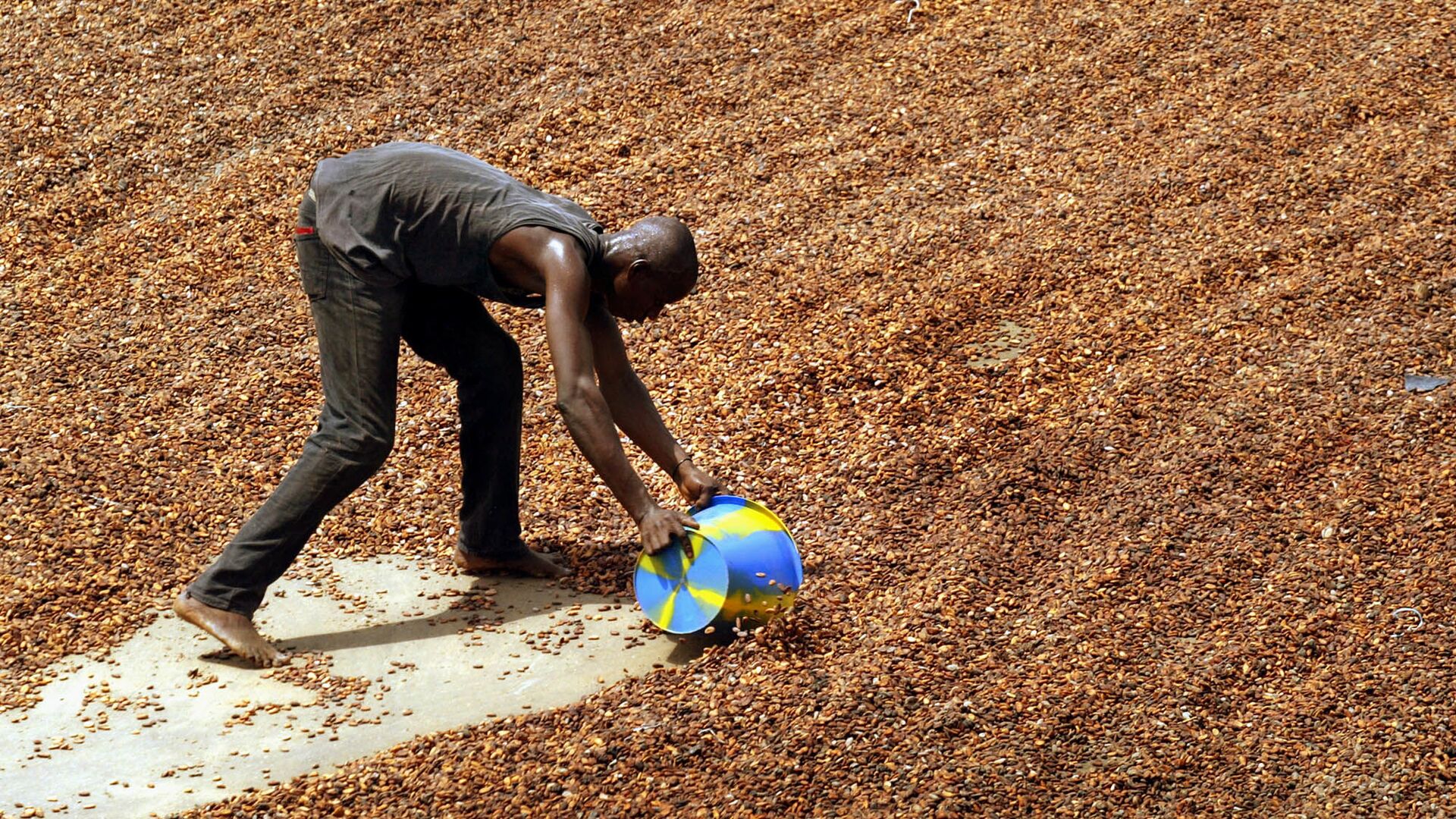https://en.sputniknews.africa/20240416/world-cocoa-bean-prices-double-to-47-year-record-exchange-data-show-1066101013.html
World Cocoa Bean Prices Double to 47-Year Record, Exchange Data Show
World Cocoa Bean Prices Double to 47-Year Record, Exchange Data Show
Sputnik Africa
In early February, the exchange value of a tonne of cocoa beans reached $5,000 for the first time since 1977, and less than a week later, prices increased to... 16.04.2024, Sputnik Africa
2024-04-16T18:05+0200
2024-04-16T18:05+0200
2024-04-16T18:21+0200
sub-saharan africa
economy
west africa
cocoa
prices
ghana
cote d'ivoire (ivory coast)
trade
https://cdn1.img.sputniknews.africa/img/07e8/04/10/1066101688_0:88:2000:1213_1920x0_80_0_0_95c27c2c45a25001d93775666a1c61e3.jpg
At the end of trading on Monday, the exchange value of cocoa beans in the world reached a new peak of $11,000 per tonne, which is twice as much as the record set in 1977, according to data from the ICE Futures exchange.In March, the price of cocoa beans, already on a steady rise over the past two years, surged to unprecedented levels, surpassing $10,000 per tonne and increasing by 2.4 times since the beginning of the year.The International Cocoa Organization (ICCO) reported in January that the two-year global cocoa bean deficit will continue into 2024, while shipping difficulties in the Red Sea will support the current trend of rising prices for the commodity.According to the ICCO, production is expected to fall short of demand by 374,000 tonnes by 2024, while Swiss-based producer Barry Callebaut expects a gap of about 500,000 tonnes, or about one-tenth of the global market.The increase in cocoa prices is due to low yields in West Africa, where approximately 70% of the world's cocoa is grown. The low yields are caused by the El Niño weather phenomenon, an above-average sea surface temperature in the Pacific Ocean that affects global climate conditions, causing higher temperatures and heavy rainfall in the region.In particular, according to the ICCO, there has been a shortage of supply from key producers in Côte d'Ivoire and Ghana, which has led to a 28% and 35% drop, respectively, in arrivals at these countries' ports compared with the previous season.
https://en.sputniknews.africa/20240331/what-caused-price-of-cocoa-beans-to-rise-and-what-can-it-lead-to-1065850356.html
west africa
ghana
cote d'ivoire (ivory coast)
Sputnik Africa
feedback@sputniknews.com
+74956456601
MIA „Rossiya Segodnya“
2024
Maxim Grishenkin
https://cdn1.img.sputniknews.africa/img/07e7/0a/17/1063018107_0:0:1104:1103_100x100_80_0_0_03090c85a11f5d2e8a19cf1d989443c9.jpg
Maxim Grishenkin
https://cdn1.img.sputniknews.africa/img/07e7/0a/17/1063018107_0:0:1104:1103_100x100_80_0_0_03090c85a11f5d2e8a19cf1d989443c9.jpg
News
en_EN
Sputnik Africa
feedback@sputniknews.com
+74956456601
MIA „Rossiya Segodnya“
Sputnik Africa
feedback@sputniknews.com
+74956456601
MIA „Rossiya Segodnya“
Maxim Grishenkin
https://cdn1.img.sputniknews.africa/img/07e7/0a/17/1063018107_0:0:1104:1103_100x100_80_0_0_03090c85a11f5d2e8a19cf1d989443c9.jpg
economy, west africa, cocoa, prices, ghana, cote d'ivoire (ivory coast), trade
economy, west africa, cocoa, prices, ghana, cote d'ivoire (ivory coast), trade
World Cocoa Bean Prices Double to 47-Year Record, Exchange Data Show
18:05 16.04.2024 (Updated: 18:21 16.04.2024) In early February, the exchange value of a tonne of cocoa beans reached $5,000 for the first time since 1977, and less than a week later, prices increased to $5,500 per tonne, exceeding the 47-year-old record.
At the end of trading on Monday, the exchange value of cocoa beans in the world reached a new peak of $11,000 per tonne, which is twice as much as the record set in 1977, according to data from the ICE Futures exchange.
The price reached $11,068 during Tuesday's trading, but then dropped to $10,894.
In March,
the price of cocoa beans, already on a steady rise over the past two years, surged to unprecedented levels, surpassing $10,000 per tonne and increasing by 2.4 times since the beginning of the year.
The International Cocoa Organization (ICCO) reported in January that the two-year global cocoa bean deficit will continue into 2024, while shipping difficulties in the Red Sea will support the current trend of rising prices for the commodity.
According to the ICCO, production
is expected to fall short of demand by 374,000 tonnes by 2024, while Swiss-based producer Barry Callebaut expects a gap of about 500,000 tonnes, or about one-tenth of the global market.
The increase in cocoa prices is due to low yields in West Africa, where approximately 70% of the world's cocoa is grown. The low yields are caused by the El Niño weather phenomenon, an above-average sea surface temperature in the Pacific Ocean that affects global climate conditions, causing higher temperatures and heavy rainfall in the region.
In particular, according to the ICCO, there
has been a shortage of supply from key producers in Côte d'Ivoire and Ghana, which has led to a 28% and 35% drop, respectively, in arrivals at these countries' ports compared with the previous season.



